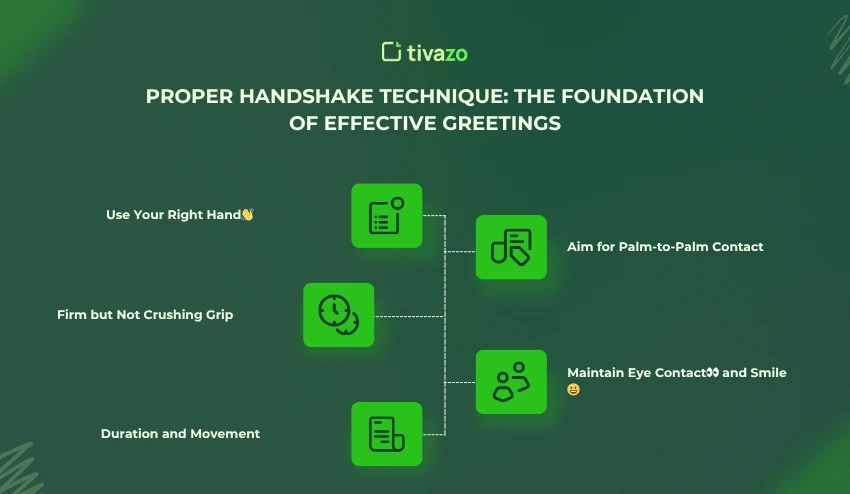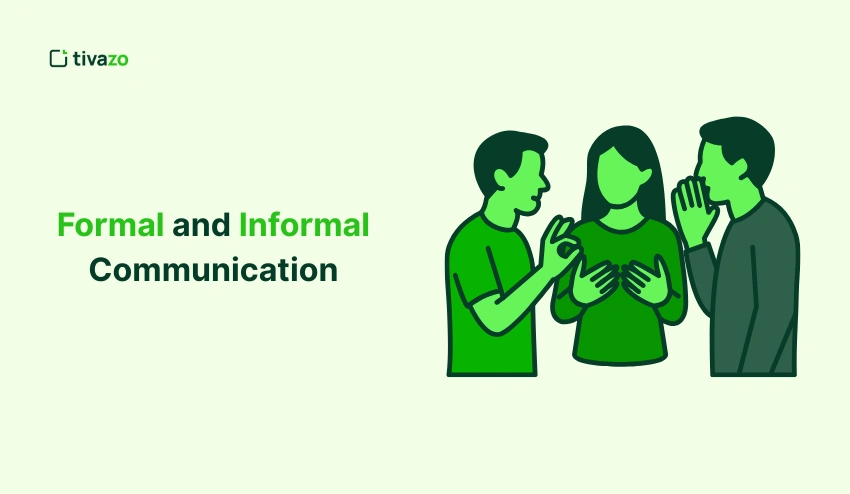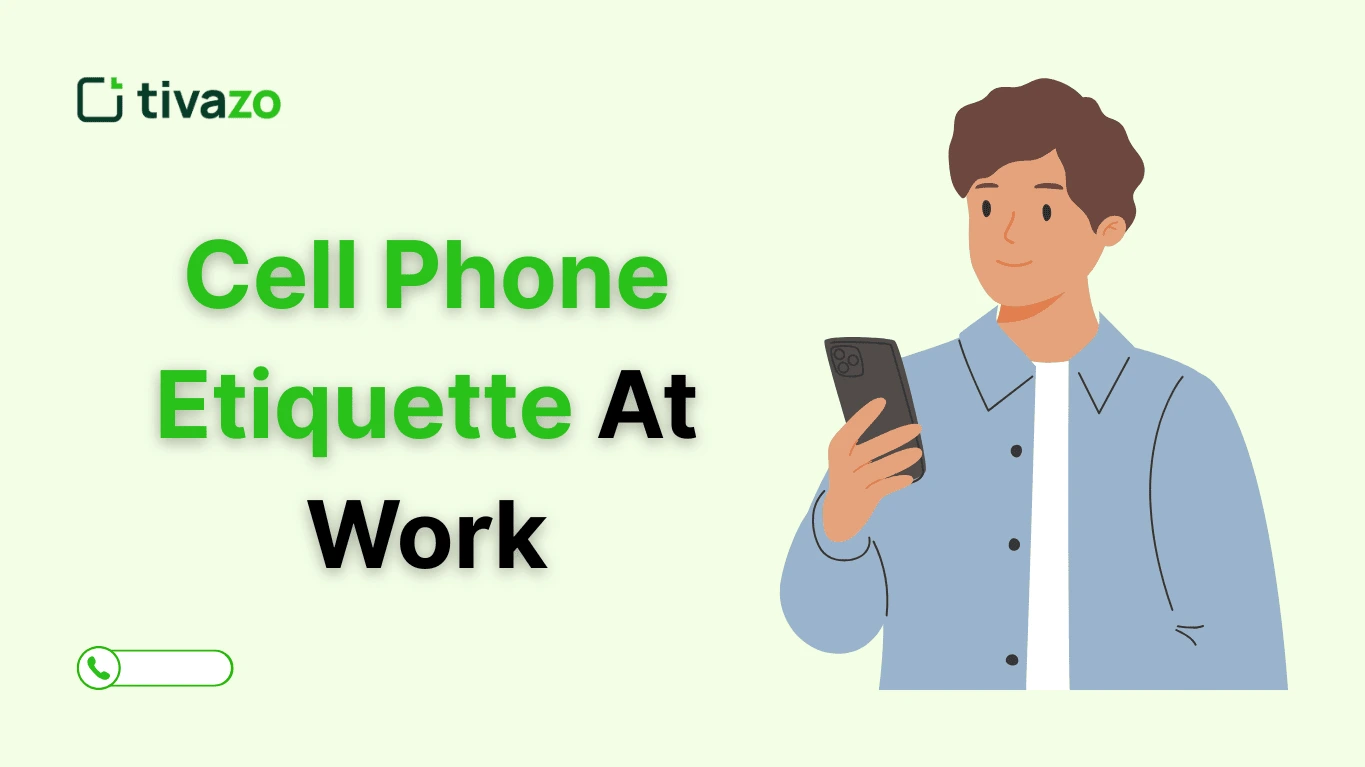A handshake may appear to be a very basic thing, but it says a lot about you even before you utter a word.
Handshake etiquette is the unwritten rule of greeting other people in a confident and respectful way. It is not simply a courtesy of good manners; it determines the first impression not only in the workplace but also in social life. A strong, well-delivered handshake can be an open door, a confidence builder, and a professional encounter.
Knowledge of handshake etiquette is the art of nonverbal communication. It is all about the strength of your handshake or the eye contact, among other details. As experts claim, a good handshake can determine the impression that people will have of your confidence and character. Be it a potential employer, a client, or a new acquaintance you are going to meet, the ability to conduct the perfect handshake is always a useful skill that leaves an indelible mark.
Key Highlights:
- Proper Handshake Technique: The Foundation of Effective Greetings
- Business Handshake Rules: Dos and Don’ts in Professional Settings
- Professional Handshake Tips That Make You Impressive
- Cultural Differences in Handshakes
- Alternatives to Handshakes in Modern Contexts
- Why Mastering Handshake Etiquette Still Matters Today
Proper Handshake Technique: The Foundation of Effective Greetings
Mastering handshake etiquette is important, and this is done by getting the handshake technique correct. It is the basis of a good greeting that sends the message of confidence and respect at the first instant.

1. Use Your Right Hand
The handshake etiquette requires one to use the right hand when shaking hands with other people. Extending your right hand is a sign of respect and acceptable in society, whereas the left hand is considered confusing or uncomfortable unless you have a good reason, such as an injury.
The right hand is also used to be consistent with your greetings, which strengthens the professional image. This little touch contributes much to the perception of your handshake in a business and social environment.
2. Aim for Palm-to-Palm Contact
An important part of handshake etiquette is to make a solid palm-to-palm connection. This contact will provide a firm handshake and a natural locking of the web between the thumb and index fingers with the other person.
When your palms touch, it can reinforce the nonverbal message your handshake conveys, saying you are sincere and open. It is an easy yet effective method of gaining trust when you introduce yourself.
3. Firm but Not Crushing Grip
It is all about grip pressure in the handshake etiquette. A handshake that is weak handshake can indicate insecurity or uninterest, whereas a handshake that is too strong can be perceived as being aggressive or intimidating.
A good and steady grip that is firm enough yet not too tight is recommended to send the message of being confident and not uncomfortable. This balance between the two makes your handshake welcoming and business-like.
4. Maintain Eye Contact and Smile
Keeping eye contact steady is an important aspect of handshake etiquette. It displays care, honesty, and appreciation, which will create a rapport.
To increase the effect of warmth and friendliness, combine eye contact with a sincere smile. Etiquette experts such as Emily Post say that such nonverbal signals will support favorable impressions that endure after the handshake.
5. Duration and Movement
Your handshake also involves the length and movement of the handshake, which forms a good part of handshake etiquette. Your handshake should be short, approximately two to three seconds, and should consist of one to two upward and downward motions.
Staying too long or shaking too much is not only uncomfortable to other people, but it also creates a bad impression. A timely handshake is dignified, assertive, and makes a good impression.
These are the basics of handshake etiquette that can be mastered in order to make a good first impression. A good handshake can unlock doors and create long-lasting relationships both in the workplace and in the social arena when properly done.
Business Handshake Rules: Dos and Don’ts in Professional Settings
When it comes to the professional world, handshake etiquette is even more important as it shows how you value the norms and hierarchy in the workplace. It is always important to observe the dos and don’ts so that you make a good and positive impression in any business communication.
1. Wait for the Senior Person to Initiate
One of the most important handshake etiquette in business is to allow the senior individual or the host to offer his or her hand first. This is a mere sign of respect to authority and recognition of the fact that there is a formal hierarchy in most professional settings.
Waiting to be extended a handshake shows that you are conscious and professional. This will establish a good and positive atmosphere for a successful meeting.
2. Stand While Shaking Hands
Proper handshake etiquette requires standing when greeting someone, especially in a business context. Standing is a sign of respect and preparation, which demonstrates that you appreciate the interaction and are ready to give it all.
A handshake with one person seated may seem casual or disrespectful, and this will compromise your professionalism. Standing will make you look attentive and courteous.
3. Avoid Shaking Hands When Sick
Health considerations are an important part of modern handshake etiquette. When you are not feeling well or when you are at a time when you are at high risk of being ill, it is correct to forego the handshake and use an alternative like a fist bump or a nod.
Health awareness and empathy towards other people are just as essential as a firm handshake, and can be the difference between a successful and a failed professional.
4. Don’t Shake Hands with a Clammy or Wet Hand
Sweaty or clammy hands can negatively impact your handshake etiquette. Are you a person with sweaty palms? You can always wipe your hands off beforehand, so as not to have a dirty and unpleasant handshake.
A handshake is dry and comfortable, and this is a better impression, which means confidence and personal hygiene.
5. Respect Personal Space
Maintaining an appropriate distance, about an arm’s length or 18 inches, is a critical part of handshake etiquette. Respecting personal space prevents discomfort and fosters a positive, professional atmosphere.
Crowding someone during a handshake can be intrusive and off-putting, so being mindful of space helps ensure your greeting is welcome and respectful.
Mastering these business handshake rules is essential for demonstrating professionalism and making meaningful connections. Proper handshake etiquette can significantly influence how colleagues and clients perceive your credibility and respectfulness.
In short:
| Do’s | Don’ts |
| Wait for the senior person to initiate the handshake | Don’t reach out first to a senior or in formal settings |
| Stand up while shaking hands | Don’t shake hands while seated |
| Use alternatives like fist bumps when sick | Don’t shake hands if you or the other person is visibly ill |
| Keep your hands dry and wipe if clammy | Don’t offer a clammy or wet hand |
| Maintain about 18 inches of personal space | Don’t invade the other person’s personal space |
Professional Handshake Tips That Impress
More than the basic handshake etiquette, there are some finer details that can make your handshake outstanding. These handshake guidelines will enable you to express confidence, establish rapport, and demonstrate cultural sensitivity anywhere.
1. Mirror Their Grip
To improve the handshake etiquette, mirroring the strength of the other person is one of the ways. When they match their grip pressure, it is a sign of empathy and will create an unconscious connection, demonstrating that you are interested and listening.
This type of nonverbal communication creates trust, and a handshake is not a forced one; it is natural. Adjusting to the other person’s grip, you show that you are social and respect the personal style of the other person.
It is important to remember that mirroring is not supposed to be excessive imitation, as it may appear insincere. The idea is to establish the balance in your professional greeting by means of body language.
2. Engage Your Whole Body
Good handshake etiquette is not all about the hands, but it is about how you use your body. When you combine your handshake with an open body position, non-tensed shoulders, and a bit of forward lean, you provide the message of enthusiasm and sincere interest.
Your body language will convey energy and preparedness, which will supplement the shake and reinforce first impressions. Communication experts indicate that an engaged posture will make you look friendly and assertive.
The fact that you use your entire body during the greeting will indicate that you are in the moment, which will increase the overall effect of the professional handshake.
3. Mind Your Posture
Your posture plays a crucial role in handshake etiquette and how your handshake is perceived. Having straight shoulders conveys a feeling of confidence, whereas slouching or leaning back can destroy the message you are trying to convey.

A good posture helps to support your presence and authority in the workplace, which indicates to the other party that you are serious about the communication. It also has a positive effect on your body language, and your handshake will be strong and confident.
Mindful of your posture, it demonstrates respect to yourself and the person you are shaking hands with, which makes your handshake more professional.
4. Be Mindful of Cultural Differences
Handshake etiquette varies widely across cultures, and understanding these differences is key to avoiding misunderstandings. To take an example, bowing is used instead of shaking hands as a sign of respect in Japan, and in some Middle Eastern countries, the handshake is longer and softer than what Westerners are used to.
Cultural awareness not only helps avoid embarrassing situations but also demonstrates respect for various traditions. Greeting styles vary depending on the country you are in, and when you are working abroad or traveling, it is a sign of professionalism and understanding the culture of the place.
The understanding of cultural differences in greetings may help establish better relationships and show a good attitude towards a global mindset.
These professional handshake tips will be an addition to your handshake etiquette kit to ensure you create a lasting positive impression when shaking hands. Your greetings will be taken to the next professional level by understanding and mastering subtle body language clues and cultural awareness.
Cultural Differences in Handshakes: What You Need to Know
Handshake etiquette is not universal. Understanding cultural nuances is critical for international business and travel:
1. Middle East: Gentle, prolonged handshakes are common; avoid the left hand.
2. China: Handshakes tend to be lighter and may be accompanied by a nod.
3. France: Multiple quick, light handshakes (usually three to four times) are common.
4. India, Nepal: A traditional handshake might be replaced by the “Namaste” gesture.
5. Latin America: Handshakes are warm and accompanied by eye contact, sometimes with a light touch on the arm.
Adapting to these cultural norms shows respect and increases your credibility as a global citizen.
Handling Awkward Handshake Situations: What To Do When Things Go Wrong
Even when you’ve mastered handshake etiquette, having an idea of what to do in such embarrassing moments of a handshake can save one the social embarrassment and maintain professionalism.
1. Limp Grip
A limp grip is one of the most common breaches of handshake etiquette and can send the wrong message. When it is you, on the other hand, gently tighten your hold to find a more equal and confident handshake without overcompensating.
In case you are the person who has a poor handshake, do not worry. Keep the discussion going with firm confidence, and also concentrate on the use of good eye contact and physical body language to build up your professional presence.
2. Sweaty Palms
Sweaty palms can sabotage an otherwise solid handshake. If you’re prone to this, discreetly wipe your hands beforehand or keep a tissue or handkerchief handy to dry off.
Proper handshake etiquette includes being mindful of personal hygiene. A quick use of hand sanitizer can also help and show that you care about making a clean, professional impression.
3. Missed Handshake
There are also cases when both sides think the time is wrong and fail to shake hands. This may occur as a result of time variance, distraction, or social anxiety.
The best way to recover is with a smile and a light chuckle. Extend your hand again confidently—good handshake etiquette includes not making a big deal out of small missteps.
4. Awkward Timing
An overly long handshake can soon get awkward. In case a person does not release immediately, you should pull your hand away after two to three seconds to establish proper social distance.
Handshake etiquette emphasizes timing as much as grip. Smoothly transitioning into conversation after ending the handshake helps move past any awkwardness quickly.
5. Injury or Disability
When a person is unable to engage in a handshake because of injury or disability, follow their lead and cope with it. Warm verbal greeting, respectful nod, or a hand on your heart can be good substitutes.
Inclusive handshake etiquette means recognizing and honoring different physical capabilities. Being flexible and sensitive in such moments shows emotional intelligence and professionalism.
You leave an impression based on how you respond, even in the event that things are not going your way. Modern handshake etiquette requires mastering the skills of going through awkward handshake situations.
Alternatives to Handshakes in Modern Contexts
As social norms evolve and health awareness rises, traditional handshake etiquette is expanding to include new, respectful forms of greeting. These alternatives allow people to maintain professionalism while honoring personal space and hygiene concerns.
1. Fist Bumps
Fist bumps have become an informal, low-contact alternative in both professional and informal interactions. They are not as formal as a handshake, but nevertheless, they are friendly and approachable, especially in team-based settings.
In modern handshake etiquette, the fist bump is widely accepted among colleagues and peers. It minimizes physical contact while maintaining a gesture of connection and mutual respect.
2. Elbow Bumps
The elbow bump was a popular gesture of greeting in the COVID-19 pandemic and is still used in health-conscious environments. They are a secure substitute for a handshake but still maintain the essence of recognition.
This form of greeting aligns with updated handshake etiquette that prioritizes hygiene and safety without eliminating human interaction. It’s especially appropriate in healthcare, education, or crowded public events.
3. Namaste or Bow
Cultural sensitivity and non-contact etiquette are done through the use of gestures such as the Namaste or polite bow. These are the polite greetings that are mainly prevalent in Asian cultures and are increasingly becoming acceptable in all cultures around the world.

Handshake etiquette now includes these meaningful alternatives as ways to honor personal boundaries and cultural traditions. They’re professional, elegant, and suitable for formal settings where physical contact isn’t appropriate.
4. Wave or Smile
A wave or a real smile, particularly at a safe distance, is a good alternative to a physical touch to recognize a person. Eye contact combined with these gestures helps to support sincerity and presence.
In modern handshake etiquette, non-verbal greetings like this are perfectly acceptable in situations where space, context, or preference prevents a handshake. They’re especially useful during virtual meetings or in large gatherings.
A willingness to accept handshake alternatives is a sign of flexibility and social intelligence. With the changes in norms, it is important to consider these choices as part of professional etiquette to preserve respect and connection in any environment.
Why Mastering Handshake Etiquette Still Matters Today
Handshake etiquette remains a powerful element of nonverbal communication, even in today’s evolving professional landscape. When attending a business meeting, job interview, or networking event, a properly done handshake sends the message of confidence, respect, and professionalism immediately.
Learning this type of greeting etiquette can make you leave a good first impression. In a world where virtual communication reigns supreme, face-to-face gestures such as a good handshake remain a force of their own sign of trust, credibility, and personal presence. It also indicates emotional intelligence and sensitivity to social standards, which are key qualities of a leader and a team player.
Despite the emergence of other greetings, the handshake etiquette has not become outdated. Rather, it has evolved to be a conscious, conscious activity that can establish the mood of meaningful relationships. The knowledge of how and when to shake hands demonstrates your professionalism, cultural awareness, and confidence to go anywhere and fit into any situation.
Conclusion
Mastering handshake etiquette means more than just knowing how to clasp hands — it’s about conveying confidence, respect, and warmth in every interaction. By following proper technique, respecting business rules, being mindful of cultural differences, and handling awkward moments with grace, you set yourself up for success in any social or professional setting.
Are you ready to make your next handshake leave a lasting positive impression?




